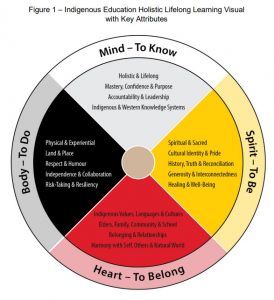Financially supported by the Government of Canada through the Department of Canadian Heritage Aboriginal Languages Initiatives, the Musqueam Place Names Mapping Portal is the public portion of Musqueam’s recorded Place Names. Data is made available by the Musqueam Indian Band. As you click on points of the map you are greeted with illustrations or historical photography of the place, and (if available) audio of the name spoken in hən̓q̓əmin̓əm̓ language. While browsing this online learning tool authored by Musqueam, I discovered:
- A strong and clear disclaimer that the materials in this place names map is Musqueam Heritage, must be treated with respect, and no part of it can be transmitted, reproduced or stored in a retrieval system – so I have not included any images of this resource out of respect.
- There was a story lines section where you could follow a path of select place names in a purposeful order. The illustrations portrayed the cultural context of the places. For example, a gathering on Jericho beach with drumming, a potlatch, watching relatives arrive in canoes, etc.
- Credit is given each artist, photographer, and audio clip.
I appreciate seeing another example of a learning tool that is Indigenous-developed. The intent on the opening page to state the digital boundaries we have as visitors interacting with the materials is an example of self-determination of an e-learning space.
The multimedia-based and interactive depiction of place names shows a holistic, multi-pronged approach to learning about the land, especially when relevant cultural traditions are included for context.
